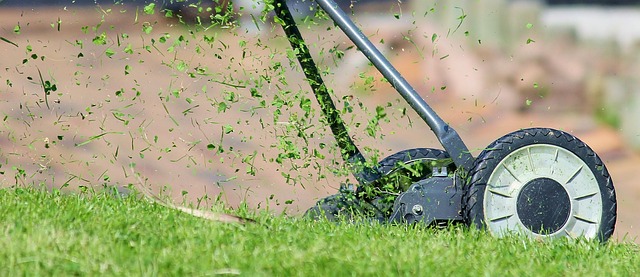Learn more about lawn mowing
Proper lawn mowing is a fundamental aspect of maintaining a healthy, attractive yard that enhances your property's curb appeal and creates an inviting outdoor space. Understanding the right techniques, timing, and equipment can transform your lawn from an ordinary patch of grass into a lush, green carpet that becomes the envy of your neighborhood.

A well-maintained lawn requires more than occasional cutting - it demands understanding the science behind grass growth, proper mowing techniques, and the right equipment for your specific yard conditions. Regular mowing promotes healthy grass development, prevents weed establishment, and creates the foundation for a thriving outdoor space that adds value to your property.
Discover Essential Lawn Care Tips
Successful lawn maintenance begins with understanding your grass type and its specific requirements. Cool-season grasses like fescue and bluegrass thrive in northern climates and require different care than warm-season varieties such as Bermuda and Zoysia found in southern regions. The key principle involves never cutting more than one-third of the grass blade length in a single mowing session, as this prevents stress and maintains the plant’s ability to photosynthesize effectively.
Soil health plays a crucial role in lawn vitality. Testing your soil’s pH levels helps determine whether amendments are needed, while proper fertilization schedules ensure grass receives essential nutrients throughout growing seasons. Watering deeply but infrequently encourages root development, creating a more drought-resistant lawn that requires less frequent maintenance.
Understand the Benefits of Regular Mowing
Consistent mowing schedules provide numerous advantages beyond aesthetic appeal. Regular cutting stimulates grass growth, encouraging the development of new shoots that create denser turf. This density naturally crowds out weeds, reducing the need for chemical treatments while creating a more uniform appearance.
Proper mowing height varies by grass species but generally ranges from 2.5 to 4 inches. Taller grass develops deeper root systems, improving drought tolerance and nutrient absorption. Additionally, leaving grass clippings on the lawn provides natural fertilization, returning valuable nitrogen to the soil as organic matter decomposes.
Explore Different Mowing Techniques
Various mowing patterns and techniques can enhance lawn health and appearance. Alternating mowing directions prevents grass from developing a grain pattern while reducing soil compaction in heavily trafficked areas. The striping effect created by professional-grade mowers results from bending grass blades in different directions, reflecting light to create contrasting bands.
Mulching mowers chop clippings into fine pieces that decompose quickly, while bagging systems remove debris for composting or disposal. Side-discharge mowers work well for tall or wet grass conditions, though they require additional cleanup. Each method serves specific purposes depending on grass conditions, weather, and desired outcomes.
Find the Right Equipment for Your Needs
Selecting appropriate mowing equipment depends on lawn size, terrain, and personal preferences. Walk-behind mowers suit smaller properties under half an acre, while riding mowers handle larger areas more efficiently. Zero-turn mowers provide superior maneuverability around obstacles but require practice to operate safely on slopes.
Blade sharpness significantly impacts cutting quality and grass health. Dull blades tear rather than cut cleanly, creating brown tips and increasing disease susceptibility. Professional sharpening services typically charge between $10-25 per blade, while replacement blades range from $15-50 depending on mower specifications.
| Equipment Type | Provider | Cost Estimation |
|---|---|---|
| Walk-Behind Mower | Honda/Toro/Craftsman | $300-800 |
| Riding Mower | John Deere/Cub Cadet | $1,500-4,000 |
| Zero-Turn Mower | Hustler/Exmark | $3,000-8,000 |
| Professional Service | Local Companies | $30-80 per visit |
Prices, rates, or cost estimates mentioned in this article are based on the latest available information but may change over time. Independent research is advised before making financial decisions.
Get Expert Advice for a Healthier Lawn
Professional lawn care services offer expertise in diagnosing problems, implementing treatment programs, and maintaining optimal grass health. Certified turf professionals understand regional growing conditions, pest management strategies, and seasonal care requirements that maximize lawn potential.
Local extension offices provide valuable resources including soil testing services, plant identification assistance, and region-specific growing guides. Many universities offer master gardener programs that train volunteers to provide expert advice to homeowners seeking guidance on lawn care challenges.
Seasonal maintenance schedules vary by climate zone but typically include spring fertilization, summer watering management, fall overseeding, and winter preparation activities. Understanding these cycles helps homeowners anticipate needs and budget for necessary treatments throughout the year.
Maintaining a healthy lawn requires patience, consistency, and proper technique application. By implementing these fundamental principles and adapting practices to local conditions, homeowners can achieve the lush, green lawn that enhances property value while providing enjoyable outdoor living spaces for family activities and relaxation.


